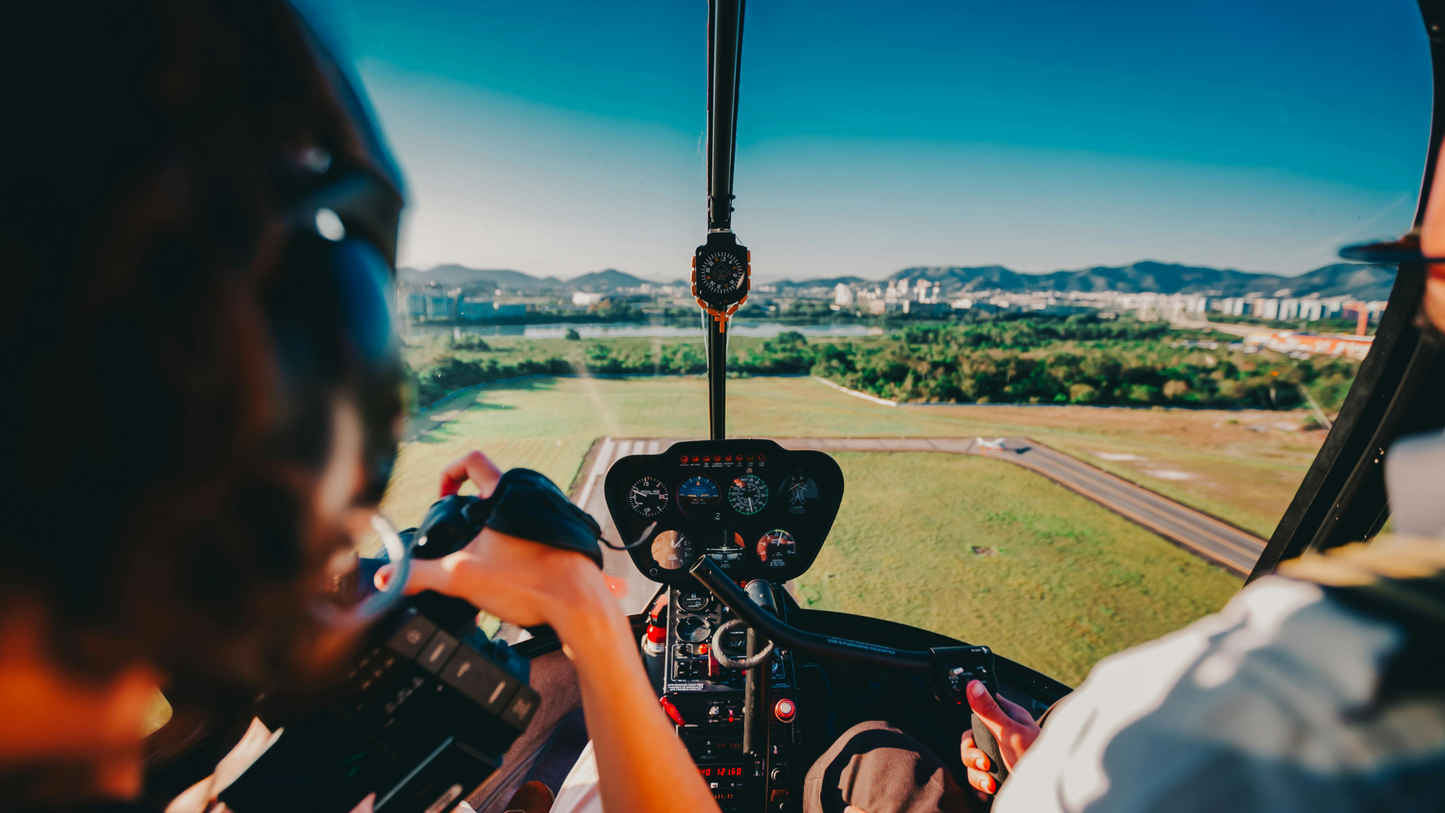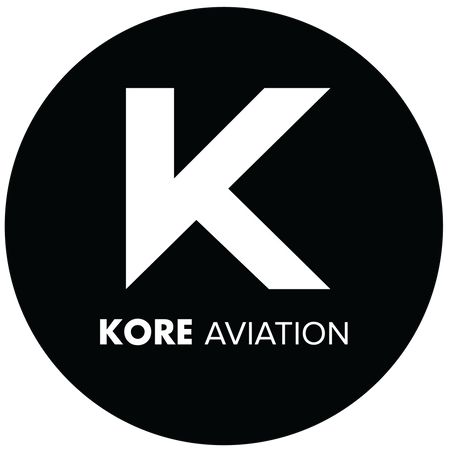
Kore Aviation - Becoming a pilot is often viewed as a glamorous journey, soaring above the clouds exploring the world, and commanding a high-tech machine. But behind the uniform and the view lies a path that’s demanding, expensive, and mentally intense. Despite many starting on the journey filled with enthusiasm, they soon realize the complexity of earning a pilot's license.
So, how hard is it to become a pilot? The answer goes far beyond just flying a plane, it includes mastering technical knowledge, physical and emotional resilience, and steep financial investments.
This guide offers a deep look into the true challenges of becoming a pilot, and why, for many, payoff is still worth it.
Why Is It So Hard to Be a Pilot?
Being a pilot is not simply flying an aircraft. It requires integrating multiple elements and compliance with numerous legal, medical, physical, and mechanical restrictions. Here are some of the challenges that make it so difficult.
1. Academic Intensity and Ground School
Pilot training begins long before the first time you sit in a cockpit. Ground school is where students learn the basic concepts of flight, which include:
- Aircraft Systems and Aerodynamics
- Meteorology and Weather Analysis
- Navigation and Flight Operations
- Regulations and Procedures in Aviation
- Human Factors and Safety Measures
These subjects are highly technical in nature and require both comprehension and memorization. In this case, students must also pass multiple exams within time constraints. Exercising a comprehensive understanding of this information under pressure is a core part of training.
2. Expensive Education and Licensing Requirements
The financial burden is usually the biggest obstacle to aspiring pilots. Most training programs for commercial pilots cost between $70,000 and $100,000 for a complete course from initial to commercial qualification. These expenses may cover:
- Private Pilot License (PPL)
- Instrument Rating (IR)
- Commercial Pilot License (CPL)
- Multi-Engine Rating
- Flight simulator time
- Uniforms, materials, and examination fees
For most individuals, this means getting one or several part-time jobs as they work towards funding their education. In contrast to traditional academic degrees, the costs associated with flight training are relentless and continue to accrue with increasing flight hours and training speed.
3. Strict Medical and Psychological Requirements
At any point, a pilot is trusted with the lives of innumerable passengers. This immense responsibility is precisely why the medical requirements are some of the strictest in any profession. For commercial operations, a Class 1 aviation medical certificate is required, and it includes:
- Thorough examination of the cardiovascular and respiratory systems
- Auditory and ocular assessments, including spectacles (color vision)
- Neurology and psychiatry
Even minor health irregularities may postpone or disqualify candidates. As for mental health, the candidate is obliged to be psychologically stable. They must not suffer from certifiable anxiety, depression, or poor judgment under stressful conditions.
4. Long Duration and Extensive Flight Hours
Under FAA regulations, most commercial pilots' listings require a minimum of 1,500 hours of flight time. Accumulating these hours often requires enduring several years in less rewarding commercial aviation positions, including:
- Teaching flight classes
- Towing banners
- Conducting aerial surveys or pipeline patrols
- Flying for regional operators
Hours worked from flight instruction and other tasks must be documented and validated, and each aircraft flown may need further instruction and evaluation. The advancement pace is sluggish, and time resources are limited.
Discover More: How to Become a Pilot: Costs, TSA, and Hours of Flight Training
What Are the Challenges of Becoming a Pilot?
Aspiring aviators face challenges across multiple domains. The academic challenge stems from the fact that aviation imposed by the FAA or EASA is considered one of the most difficult examinations in any realm.
Their syllabus includes both theory and practical assessments. They also need to be able to explain the execution of the maneuver, weight and balance assessment, weather chart interpretation, and emergency response in a calm and controlled setting.
Communication is also an important area. These students must display radio courtesy and be able to communicate confidently and clearly. Simultaneous listening, speaking, navigating the aircraft, and flying the aeroplane occur and are crucial. Most of these skills take months to learn. This multitasking ability proves to be the most difficult for almost all student pilots to develop and refine.
With the right tools, flying becomes easier. The aviation headset for students after the taxing flight enables the pilot to relax and improves concentration in future critical sessions. Hearing safety and comfort over sustained periods improves the quality of sessions and can contribute to noticeable changes.
Because of this, several flight schools and students depend on Kore Aviation Headset products, which offer noise-cancelling microphones, clear audio, and a more focused cockpit environment. In circumstances where precision and trust are of the utmost importance, that equipment is more than just helpful; it is essential.
Next is financial pressure. Earning licenses does absolutely nothing to diminish financial burdens. Aviation entry-level positions tend to pay less than expected, and the upkeep of licenses, type rating completions, or even relocating for jobs can add to the strain. Many airline pilots hold side jobs or continue living frugally for years before entering major airline positions.
No less demanding are the emotional aspects that come with being a pilot. The mental strain of flight training is coupled with the reality that students are constantly judged. Every single error is corrected on the spot. Eliminating mistakes can be enough for a participant to delay or terminate a progress track. There are best practices to navigate such circumstances: confidence, humility, the willingness or ability to take, reflect on, and adjust to feedback.
Helpful Resources for Aspiring Pilots
For aspiring pilots navigating the challenges of flight training, especially those balancing school, work, or other commitments, structured support can make a real difference. One option worth exploring is Part Time Pilot, an online ground school designed specifically for students who want to learn at their own pace.
The platform offers guided courses, FAA test prep, and real-world insights that many find helpful in building a strong foundation before and during flight training. For those looking for a more flexible and approachable way to start their aviation journey, Part Time Pilot is a valuable platform to consider.
Final Thoughts
So, how hard is it to become a pilot? The answer lies in deep, long, and expensive pursuits, but not in the realm of impossibilities. It takes exceptional mental skills, physical fitness, emotional fortitude, and careful financial strategy.
There is far more to becoming a pilot than flying a plane; it is about mastering leadership skills in the cockpit and the real world.

